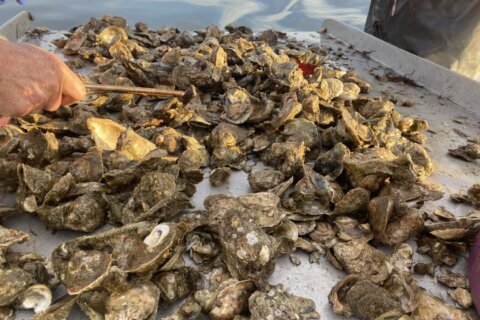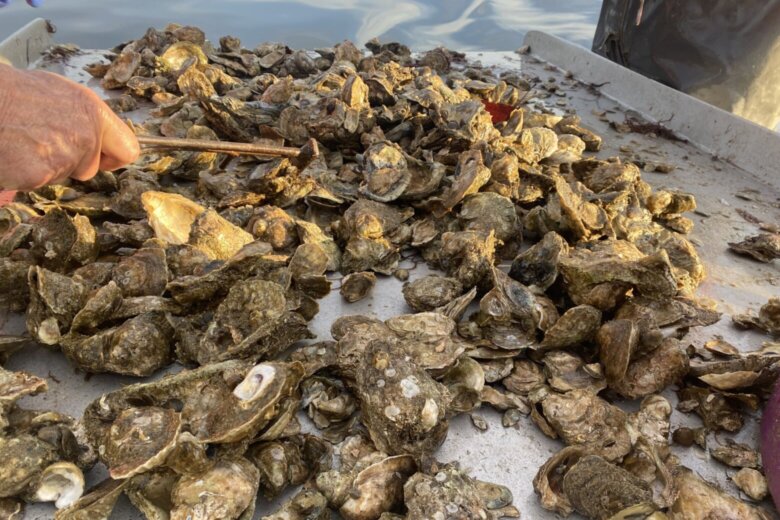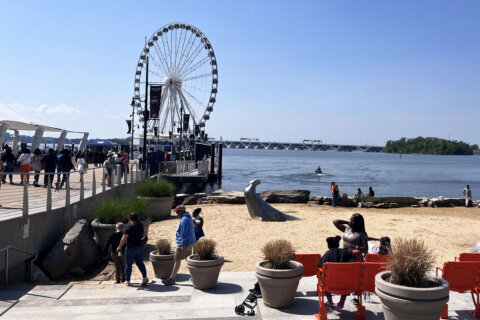
This week WTOP has been taking a deeper dive into Maryland’s oyster industry, which is on the rebound again after near decimation earlier this century.
Yes, the state’s oyster population is still well short of historical levels, but there’s more optimism for the industry than there used to be. There’s also a belief in the water that the population could be even bigger — but for a key missing ingredient.
There’s not enough oyster shells on the bottom of the Chesapeake Bay and all the creeks and rivers where oysters live.
“If we had more shells on the bottom, we would have had more (oysters),” said Robert Brown, the head of the Maryland Watermen’s Association. “We really missed the boat on that one.”
A few restaurants in the region recycle shells, and last year that resulted in about 30,000 bushels of shells being dumped back into Maryland waterways so that spat — oyster larvae — can attach themselves to them and breed the next generation of oysters.
But as helpful as that is, it also barely makes a dent in the problem.
“Years ago, used to be millions of bushels of oyster shells planted every day,” Brown said. “And that puts the culture on the bottom for the oysters when they spawn for them to set on.”
This year, Brown estimated there will only be a few hundred thousand bushels.
The demand that does exist for Maryland oysters also contributes to this problem.
“What happens is a lot of these oysters now are being put in boxes,” he said. “And then they’re shipped to Chicago, shipped to, say, St. Louis and different places … You don’t get that shell back to put into the bay. And we need shells.”
More help is on the way, though, but it’s not without some controversy or concern.
“You have to get them from elsewhere. There’s a lot of shells on the West Coast we can bring over here,” Brown said.
Watermen are generally on board with the plan, he said, because they have been reassured that West Coast oysters won’t harm the current population in Maryland with new diseases or other issues.
“But we do have concerns about that,” Brown said.
Get breaking news and daily headlines delivered to your email inbox by signing up here.
© 2024 WTOP. All Rights Reserved. This website is not intended for users located within the European Economic Area.









